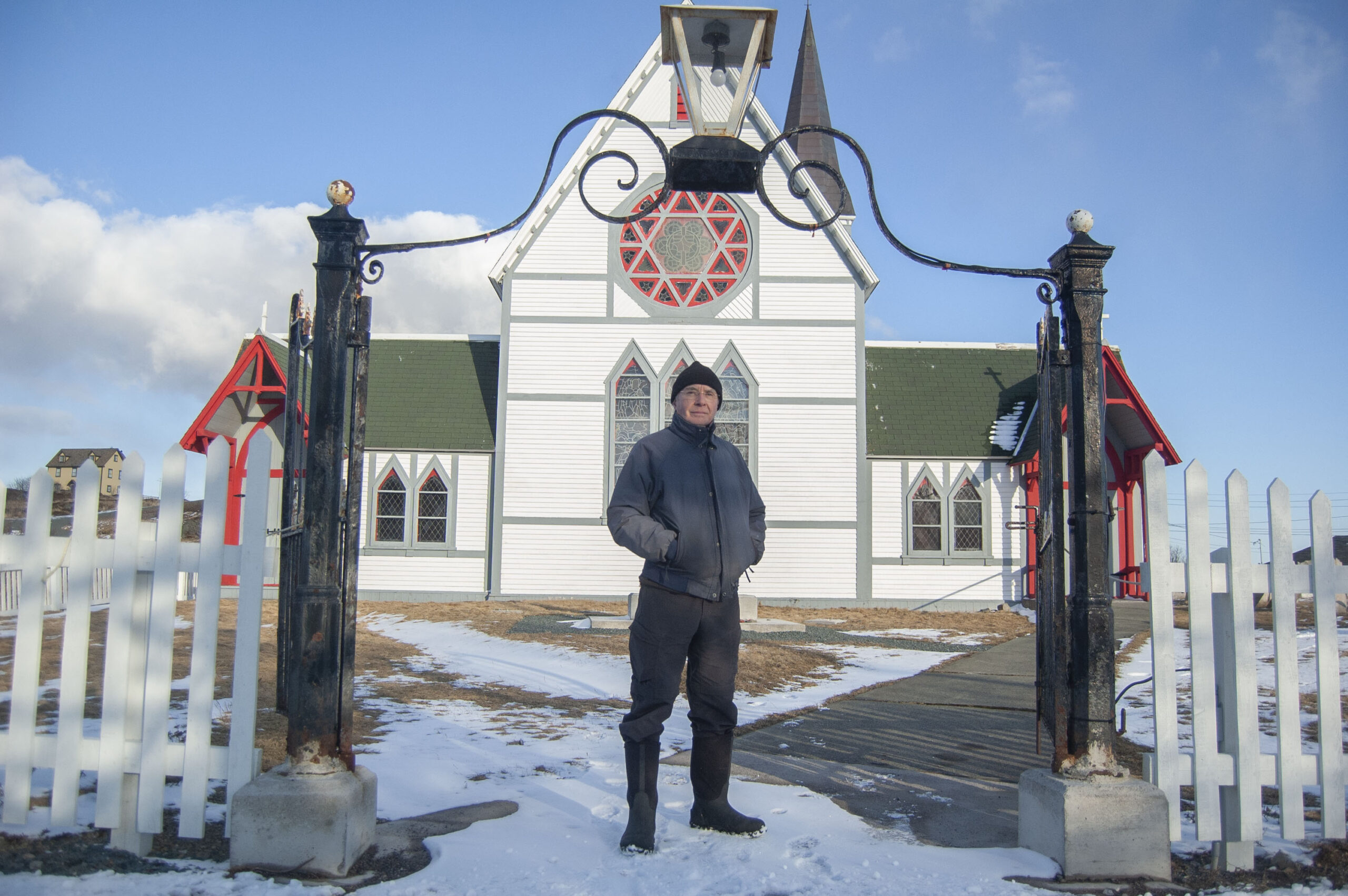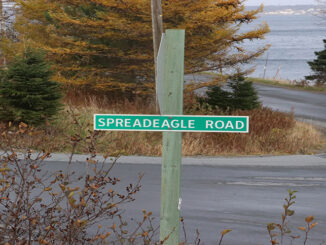A team of historians aim to undo years of decay in St. Paul’s Anglican Cemetery in Trinity

Chad Feehan
Kicker
The St. Paul’s Anglican Church cemetery is getting a makeover thanks to the Trinity Historical Society and a team of headstone preservationists.
Ian Morris and Kevin Toope were born in Trinity. They were walking through the cemetery one day a couple of years ago when they noticed the terrible conditions of the headstones. Many are more than 200 years old and are now illegible, and falling over.
The state of the headstones inspired them to organize an official restoration of the cemetery in partnership with the Trinity Historical Society, says Morris.
“They will eventually tilt over, crack, fall to the ground, then sink into the ground and disappear,” said Morris. “That just seems like a tragedy in our history. The burials there do relate a lot about life as it was in the 17th and 18th century, so we thought it was a good way to preserve our history.”
The cemetery was used by the community from 1731 until 1888, when a new Anglican cemetery was opened down the road. Since then the marble and limestone has been left to time and the elements.
Through photographic records dating back as far as the late 1800s, the team was able to identify headstones that are no longer visible today, having cracked and sunk beneath the grass and soil.
Toope knows there’s not much time left.
“It won’t take long, unless something is done, until the ones that are there disappear completely,” said Toope.
The cemetery offers a unique glimpse into the town’s past, as official burial records wouldn’t be in practice until 1757, more than 20 years after the cemetery was opened.
Records show there are more than 2,100 people resting in the graveyard, but only 188 headstones remain. Being the only consecrated ground in the Trinity Bay area at that time, people would travel long distances from other communities to have their loved ones buried there.
As committed to the cause as they are, Toope and Morris are not doing it alone.
Robyn Lacy and Ian Petty are PhD students in archeology at MUN, who through their company Black Cat Cemetery Preservation have been assessing the damage to the cemetery and are on board to begin restoration in the spring.

Memorializing, said Petty, never stops.
“Each stone represents a person…the memory is able to still persist,” said Petty.
Toope agrees.
“Everyone of them has a life story,” said Toope. “Each one is unique.”
Lacy’s masters research was on historic cemeteries, some of which were in Newfoundland. Through this research she found there was a lack of graveyard conservation in the province, despite the need and local interest.
The historical society still has work to do and needs to raise a total of $37,000.
For Lacy, restoring the legibility of people’s names on the headstones is a way of bringing their names “back into (the) consciousness” of the people who take the time to walk through the historic cemetery grounds.
“Being able to protect them and let them last a little bit longer is pretty important,” said Lacy.
Lacy and Pretty take great care to use proper techniques and materials when fixing up a grave site, such as using brushes with plastic bristles instead of wire, pH neutral cleaners instead of everyday soap, and lime mortar rather than concrete to secure a headstone in place.
Using the wrong materials can do more harm than good, said Lacy, which not everyone is aware of. The pair recommends not cutting corners when fixing up the grave of a loved one.
“There is a lot of information on the internet that is really outdated, which is unfortunate,” said Lacy about headstone restoration.
The initiative is being funded in part by the society’s Adopt a Headstone project in hopes they can convince descendants to donate to the restoration fund.
For Morris, the project hits even closer to home. His third great-grandfather is buried there.
“It’s the right thing to do,” he said.
“This is a respectful thing to do. This is honouring the memory of those who are buried there.”


Be the first to comment